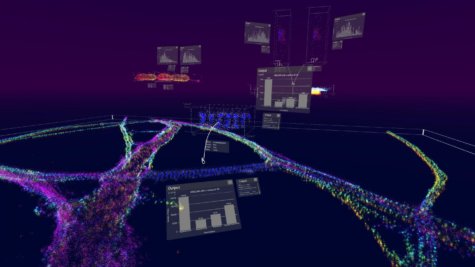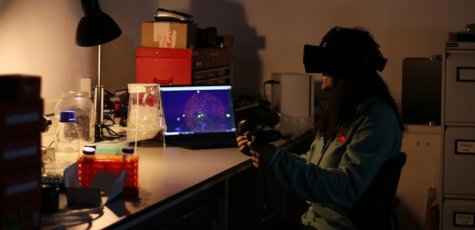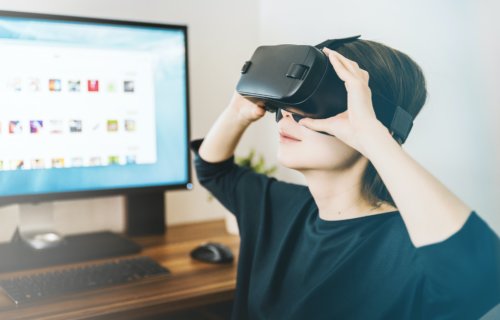CAMBRIDGE, United Kingdom — What if there was a machine that could allow scientists to travel into the body and examine actual human cells? It sounds like something from the movie “Inner Space,” but virtual reality is making it a very real possibility. Researchers in the United Kingdom are using VR headsets and revolutionary software to figuratively “walk” around inside cells.
Researchers at the University of Cambridge have created software called vLUME to visualize cellular data in real time. The vLUME technology uses 3D imaging software from Lume VR Ltd. and combines it with super-resolution microscopy data.

Super-resolution microscopy won the Nobel Prize for Chemistry in 2014 and makes it possible to take pictures at the nanoscale. This breakthrough allows scientists to view biological processes at the molecular level. Until now however, they couldn’t see what was happening in three dimensions.
“Biology occurs in 3D, but up until now it has been difficult to interact with the data on a 2D computer screen in an intuitive and immersive way,” says Dr. Steven F. Lee from Cambridge’s Department of Chemistry in a university release. “It wasn’t until we started seeing our data in virtual reality that everything clicked into place.”
Virtual reality: ‘An entirely different perspective’
Although Lee’s team had experience using the Nobel Prize-winning microscopy, their partnership with Lume allowed them to take this breakthrough to another level.
“vLUME is revolutionary imaging software that brings humans into the nanoscale,” says Alexandre Kitching, CEO of Lume. “It allows scientists to visualize, question and interact with 3D biological data, in real time all within a virtual reality environment, to find answers to biological questions faster. It’s a new tool for new discoveries.”

Using vLUME, PhD student Anoushka Handa was able to take an image of her own immune cell and then stand inside the data in virtual reality. “It’s incredible – it gives you an entirely different perspective on your work,” Hanada says.
Kitching notes that the virtual reality software can allow millions of data points to be loaded and shared with partners doing research worldwide.
“For scientists, running analysis on this data can be very time consuming. With vLUME, we have managed to vastly reduce that wait time allowing for more rapid testing and analysis,” the Lume CEO explains.
For now, Cambridge researchers is using this VR breakthrough to build biological datasets on neurons, immune cells, and cancer cells. Specifically, Lee’s group is studying how antigens enable an immune response in humans. The lead researcher adds being able to actually walk inside the human body has already allowed them to rule out old theories and make new ones about human biology.
The study appears in the journal Nature Methods.
Like studies? Follow us on Facebook!
